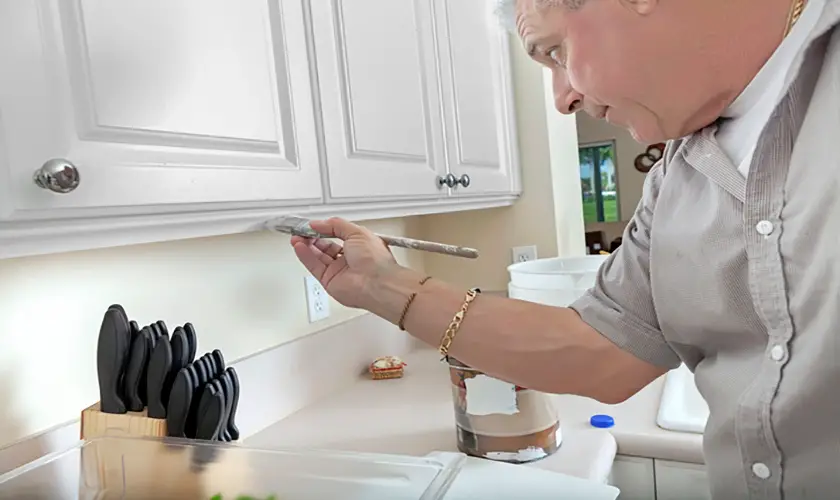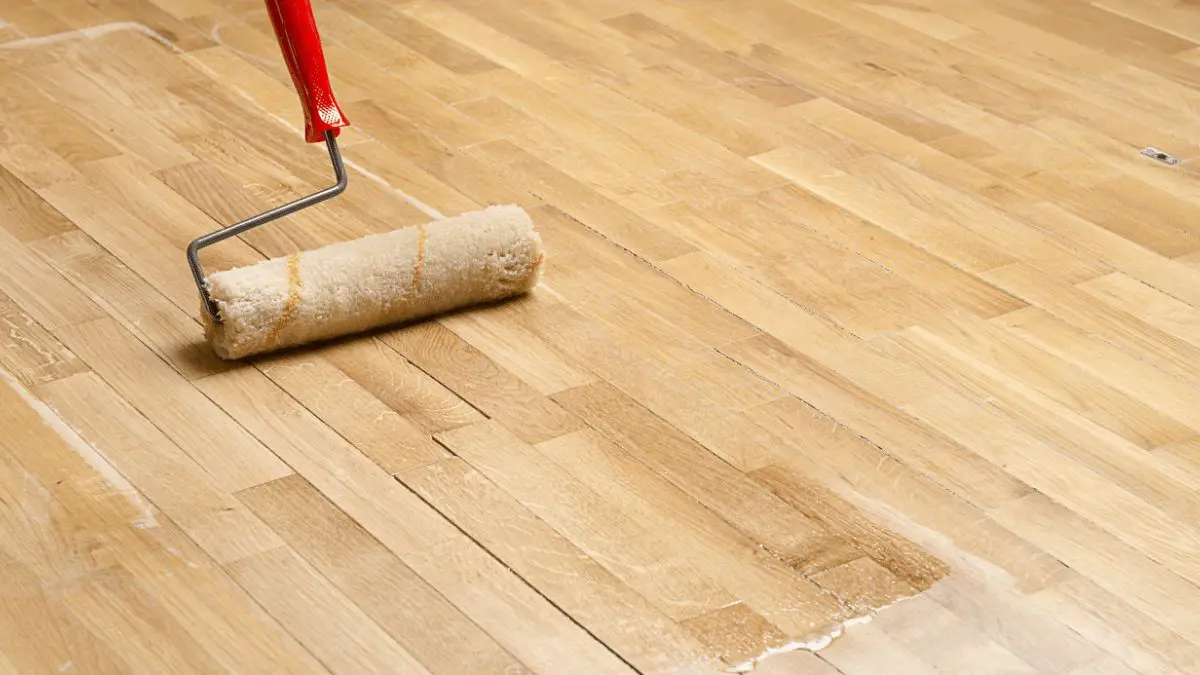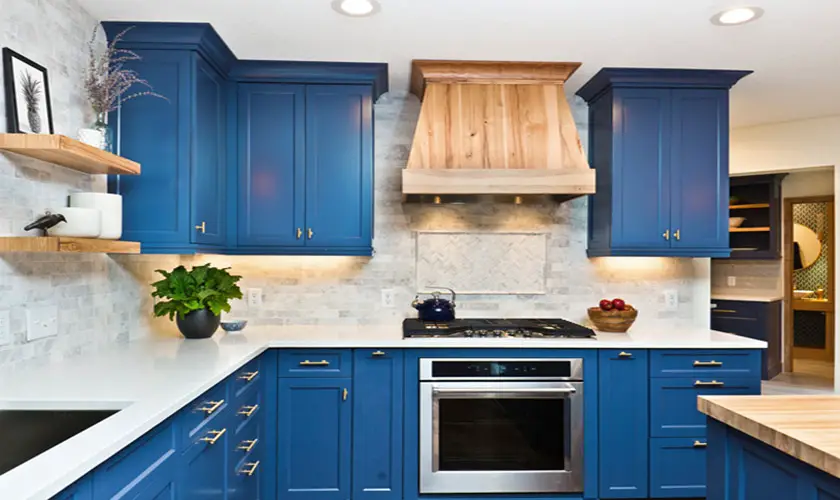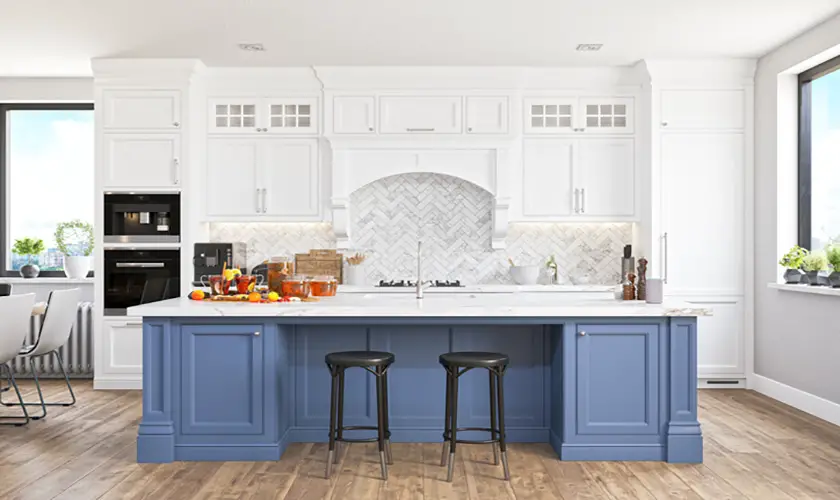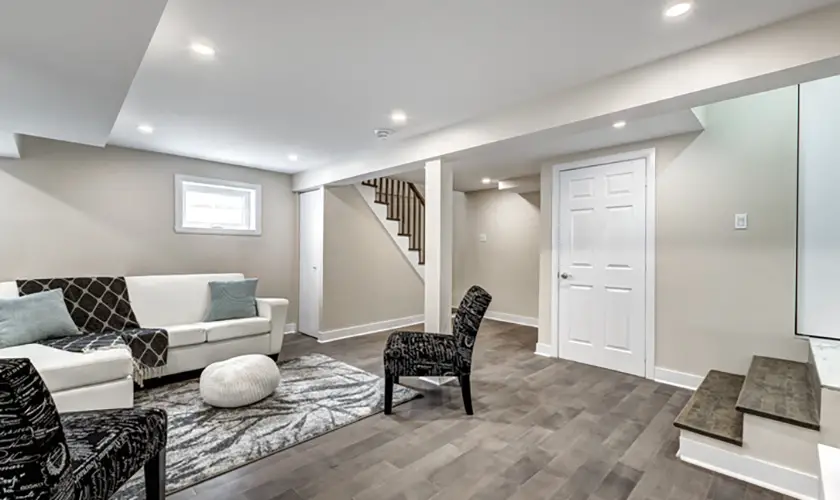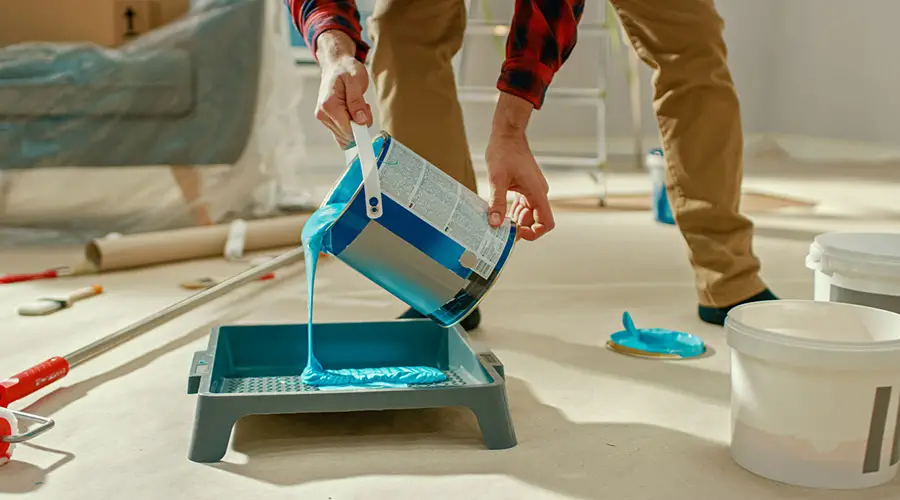
Nearly all painting jobs will end with a little bit of extra paint leftover. It’s inconvenient to store so many cans of different paint, so you may be wondering if you can simply mix interior and exterior paint to save money and space.
Generally, it is best not to mix interior and exterior paint. Combining the two types of paint can make application difficult, have an inconsistent look, and cause the paint to have a much shorter lifespan. Exterior paint also has a higher concentration of harmful volatile organic compounds (VOCs).
Whether or not you can mix interior and exterior paint safely comes down to various factors. Additionally, even if you can do it safely, the resulting paint mixture is often nearly unusable due to the different paint formulas. Let’s take an in-depth look at mixing interior and exterior paint, what can happen, and whether or not you should do it.
5 Things To Consider When Mixing Interior and Exterior Paint
Before mixing outdoor and indoor paint into a single container, knowing what you’re getting yourself into and the potential outcomes is essential. There are five main things to think about when combining paints intended for different uses:
- VOC emissions
- Paint color
- Base ingredient
- Paint finish
- Brand of paint
1. Increased VOC Emissions
VOC stands for volatile organic compounds. Unless you specifically find non-toxic paint, most paints, especially ones intended for exterior use, will have VOC emissions at some level. VOCs are simply gas emissions that paint emits when drying, curing, and (at a lower level) throughout its lifetime. While harmful by themselves, these emissions also react readily with other elements in the air and can create toxic fumes.
Exterior paint typically has a much higher concentration and off-gassing of VOC than any other type of paint, plus more additives to help fight mildew and other common outdoor problems. When used outdoors, it’s not an issue because all of the VOCs dissipate in the air. However, without the ventilation provided by the outdoors, the VOC emissions from exterior paint can be very harmful.
Mixing exterior paint and interior paint provides many unknowns regarding VOC emissions. Combining indoor paint with exterior paint typically makes the combination unusable indoors because of the toxic off-gassing, but it could even increase the amount of VOC emissions. Depending on the exact paint formulation, the VOC emissions could interact with other ingredients in the interior paint and create more harmful off-gas.
With all that in mind, it’s clear that combining interior and exterior paint can pose potentially serious health concerns. Using the combination of the two paint types outdoors could be viable, but you should also consider the other factors that we’ll discuss below.
2. Inconsistent Paint Colors
Mixing paint colors is an exact science, so combining cans of paint can cause many problems if you’re not careful. The pigment ingredient in paint determines the paint’s final color. There are two main types of paint pigments: organic and synthetic.
Even if the two paints you intend to blend are precisely the same color, minor differences between the two shades can combine to create an entirely different color. Paint shades often don’t even match up if they’re the same color and brand—there are always slight differences.
Combining two cans of interior paint or two cans of exterior paint is one thing, but mixing exterior and interior paint creates a whole new set of potential issues. There are many differences between exterior and interior paint, including the ingredients and pigments used. Exterior paint typically uses stronger pigments and additives to help withstand fading over time and the harsh outdoor elements.
There are many unknowns when mixing paints, especially combining ones intended for exterior and interior use. The exact interaction between the pigments and other ingredients can vary widely and is often unpredictable. Inconsistent, dull, or unexpected colors are not uncommon.
3. Paint Base Interaction
There are many ways to categorize the different types of paints available, but one of the most common is by each’s base. A paint’s base is the foundational ingredient in its formulation. Generally, there are three main paint base categories:
- Oil-Based Paints – These paints have an oil base consisting of synthetic alkyd or natural oil, such as linseed, poppy, or walnut oil.
- Water-Based Paints – As the name implies, these paints have a base consisting primarily of water. Some people refer to water-based paints as latex-based.
- Latex-Based Paints – Many people call these paints acrylic latex paints. These paints have a water base with added plastic resin for better adhesion and durability.
For the best consistency when mixing two paints, it’s best to combine paints with the same base. In many instances, water-based and latex-based paints can mix relatively well, but mixing either one with an oil-based paint does not work very well.
When mixing exterior and interior paint, you’ll often run into a problem with mismatching bases. Most outdoor paint is oil-based (some can be latex-based), while most indoor paint is water or latex-based. Due to the bases’ interactive qualities, it is nearly impossible to mix oil-based paint with water-based or latex-based paint properly.
4. Problematic Paint Finish
A paint’s finish, sometimes called sheen, is the paint’s final surface look. Generally, paints with less sheen damage more quickly than ones with higher reflectiveness. Below are the main categories of paint finish that you’ll normally see, ordered from least reflective to most reflective:
- Matte/Flat
- Eggshell
- Satin
- Semigloss
- High gloss
Typically you can mix paints with similar finishes without much of a problem. When combining two paints with slightly different finishes, the finished mixture often appears dull and less reflective than the highest gloss paint used in the combination. It is best to avoid mixing two paints with significantly different finishes, such as combining matte with semigloss paint. The difference in finish is simply too large and will often not mix well or look good on the surface.
Most exterior paints tend to be on the less reflective side, often being eggshell or satin. Lower sheen paints help hide surface imperfections, but you typically don’t want to go too matte, or it will be susceptible to damage. On the other side of things, many interior paints have a more reflective finish to enable easier cleaning and more durability. Keep this difference in mind if you decide to mix interior paint with exterior paint.
5. Brand Formula Differences
Mixing two different cans of paint can be tricky because there are many variables, including paint coloring, bases, VOC emissions, and finish. Things get even trickier when mixing interior paint with exterior paint. Additionally, every paint brand has its own unique paint formulation techniques for its outdoor and indoor paint.
Generally, you can mix paints from different brands without a problem if the other factors discussed above are compatible. However, differences between paint brands can cause unexpected issues if you’re not careful.
For example, paint finish ratings can vary depending on the paint company. Company #1’s eggshell finish paint may be comparable to Company #2’s satin finish paint. Inconsistencies can also exist between companies regarding colors, pigment types, base liquids, and other ingredients.
With this in mind, it’s important to try mixing the two paints you want and use the combination on a small portion of the surface to test it out. Don’t blindly trust the paint label to guide your mixing decisions. Mixing paint can be unpredictable, so testing it out before committing is a good idea.
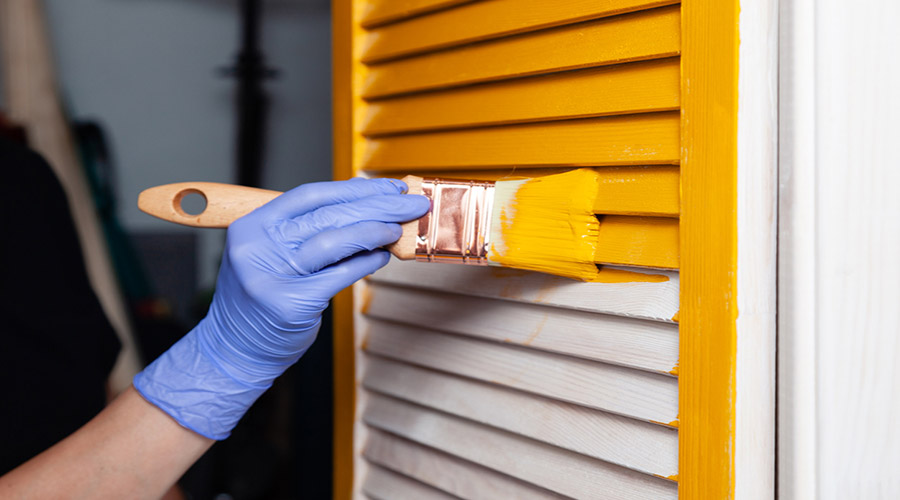
What Happens If You Mix Interior and Exterior Paint?
Let’s take a look at what you can expect if you decide to mix interior and exterior paint now that we’ve covered many of the essential considerations that you should assess before going through with it. There are so many variables when mixing outdoor and indoor paint due to the differences in paint formula, but below are some common problems.
Difficult Application
A mixture of interior and exterior paint can make applying the paint to a surface extremely difficult. Paint companies carefully formulate their paint for maximum beauty and ease of application, but when you mix two cans, ingredient proportions shift off balance causing problems.
Applying the paint to the surface of your choice can become very difficult. Additionally, the paint’s adhesion to the surface can deteriorate and become less than ideal.
Inconsistent Look
It is always risky to combine two cans of paint because you can’t always predict the final look of the mixture. This problem only becomes more apparent when mixing exterior and interior paints.
The different ingredients used in exterior and interior paint make any attempt to combine them very inconsistent. The formulas for outdoor and indoor paint are too different, causing problems with the paint bases, finishes, and colors.
Shortened Lifespan
Using a combination of outdoor and indoor paint anywhere will usually result in a shorter lifespan than if you used the correct type of paint in its intended location. Exterior paint is typically flexible to account for the drastic temperature changes that it experiences. However, it cannot hold up to everyday wear and tear experienced indoors. Indoor paint is more rigid and easy to clean.
Combining exterior and interior paint is suitable for neither outdoor nor indoor use. Outside it is too rigid because of the interior paint addition, and indoors it is too soft because of the exterior paint addition.
So, Should You Mix Interior and Exterior Paint?
The short answer to whether or not you should mix interior and exterior paint is: no, you should not. There are simply too many variables to consider, and the resulting mix would be far less suitable than merely using the correct type of paint for the situation.
The possibility of increased VOC emissions, inconsistent color, problematic paint base interactions, finish issues, and brand differences are not worth using up the last bit of paint in a can. Even if you somehow manage to combine exterior and interior paint safely, its application, appearance, and lifespan will be sub-par.
What To Do With Leftover Paint?
There are many reasons why someone might want to combine interior and exterior paint, but most of the time, you have some of each kind leftover from a past project. That is entirely reasonable, but now that you know it’s not good to combine outdoor and indoor paint, what should you do with extra paint left over?
- Carefully Store It – If you might want to paint something in the same color or want to do touch-ups at a later date, carefully storing leftover paint gives you that option. Storing paint is extremely easy; you just need to ensure it’s in a cool, dry space away from direct sunlight. Most paints have a storage life of 10+ years, but make sure to check your specific type.
- Recycling Centers – Another great option is to take your paint leftovers to a recycling center if you don’t want to keep them. You can take paint to a dedicated recycling center, or many home improvement retailers accept leftover paint.
- Throw It Away – You can also throw away most paints, though you must take oil-based paints to a recycling center as it’s considered hazardous waste. To dispose of water or latex-based paint, simply add equal parts cat litter to the paint and toss it in the trash.
Disposing of paint or storing it for future use is a much better alternative than mixing it with other paint and attempting to use it. You’ll have to replace mixed interior and exterior paint much sooner than if you used the correct type of paint for the situation.
Final Thoughts
As a general rule, it’s best not to combine outdoor and indoor paint. The resulting mixture can range from mildly ugly to downright dangerous depending on the exact paints you combine. Paint companies create exterior paints and interior paints with specific ingredients to best suit their ideal locations and mixing them throws that careful formula off.
Exterior paints have increased VOC concentration, which can negatively react when mixed with other paint. Combining different bases, finishes, and colors can make the paint look unappealing, apply poorly, and not last as long.
Sources


